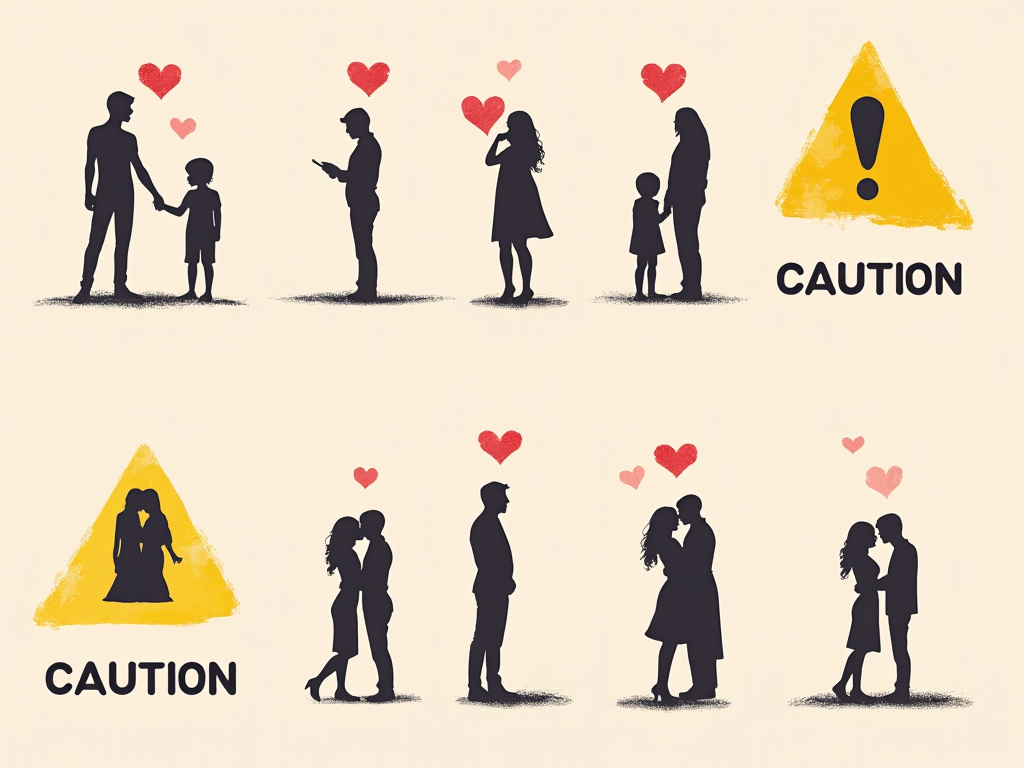
Toxic Relationships: Recognizing the Warning Signs of Unhealthy Dynamics
Reading time: 8 minutes
Ever felt like you’re walking on eggshells around someone you care about? Or questioning whether what feels “normal” in your relationship is actually healthy? You’re not alone. Navigating relationship dynamics can be complex, especially when the lines between love and control become blurred.
Let’s dive into the critical warning signs that distinguish healthy connections from toxic patterns, empowering you to make informed decisions about your relationships.
Table of Contents
- Understanding Relationship Toxicity
- Early Warning Signs to Watch For
- Toxic Communication Patterns
- Emotional Manipulation Tactics
- Assessing the Impact on Your Well-being
- Your Pathway to Healthier Relationships
- Frequently Asked Questions
Understanding Relationship Toxicity
Toxic relationships aren’t always obviously abusive. They often start subtly, with patterns that gradually erode your sense of self-worth and autonomy. Research from the American Psychological Association shows that 43% of people have experienced psychological aggression in relationships, yet many don’t recognize these behaviors as harmful.
Here’s the reality: Toxic dynamics exist on a spectrum. While some relationships involve clear abuse, others feature more subtle patterns of manipulation, control, or emotional neglect that can be equally damaging over time.
Healthy vs. Toxic Relationship Dynamics
| Aspect | Healthy Relationship | Toxic Relationship |
|---|---|---|
| Communication | Open, honest, respectful dialogue | Criticism, stonewalling, manipulation |
| Boundaries | Mutual respect for personal limits | Constant boundary violations |
| Conflict Resolution | Collaborative problem-solving | Blame, aggression, or avoidance |
| Individual Growth | Encouragement and support | Discouragement or sabotage |
| Trust | Built through consistency | Eroded through lies or betrayal |
Early Warning Signs to Watch For
Identifying toxic patterns early can save you years of emotional pain. Let’s explore the most critical red flags that often appear in the beginning stages of relationships.
The Love-Bombing Phase
Case Study: Sarah met Marcus on a dating app. Within the first week, he was calling her “the one,” showering her with expensive gifts, and wanting to spend every moment together. What felt like a fairy tale romance was actually love-bombing—an intense manipulation tactic designed to create emotional dependency.
Love-bombing involves overwhelming someone with excessive attention, affection, and promises to establish control. While genuine enthusiasm is normal in new relationships, love-bombing feels disproportionate and rushed.
Key Early Warning Indicators
- Isolation Attempts: Subtle discouragement from spending time with friends or family
- Jealousy and Possessiveness: Excessive monitoring of your activities or relationships
- Rapid Relationship Progression: Pushing for commitment, moving in together, or marriage unusually quickly
- Boundary Testing: Consistently pushing against your stated limits
- Mood Volatility: Extreme emotional highs and lows that feel unpredictable
Toxic Communication Patterns
Communication is the foundation of any relationship, and toxic patterns often reveal themselves through how conflicts are handled and everyday conversations unfold.
The Four Horsemen of Relationship Apocalypse
Relationship expert Dr. John Gottman identified four communication patterns that predict relationship failure with 94% accuracy:
Toxic Communication Patterns Prevalence
*Percentage of toxic relationships exhibiting each pattern (Gottman Institute Research)
Recognizing These Patterns
- Criticism: Attacking your character rather than addressing specific behaviors
- Contempt: Sarcasm, eye-rolling, name-calling, or expressing moral superiority
- Defensiveness: Playing the victim, making excuses, or counter-attacking
- Stonewalling: Emotional withdrawal, silent treatment, or complete shutdown
Emotional Manipulation Tactics
Emotional manipulators use sophisticated psychological tactics to maintain control. Understanding these strategies helps you recognize when your emotions are being weaponized against you.
Gaslighting: The Reality Distortion Field
Real-world Example: Jennifer repeatedly told her partner Alex that he had promised to clean the house before her parents visited. When Alex insisted he never made such a promise, Jennifer showed him a text thread where she had written about his “promise” but never showed his actual agreement. Over time, Alex began questioning his own memory and perception of events.
Gaslighting involves systematic reality distortion designed to make you question your perceptions, memories, and sanity. Studies show that 74% of women and 58% of men have experienced gaslighting in relationships.
Additional Manipulation Techniques
- Triangulation: Involving third parties to create jealousy or insecurity
- Emotional Blackmail: Using guilt, fear, or obligation to control behavior
- Hot and Cold Treatment: Alternating between excessive affection and withdrawal
- Victim Playing: Always positioning themselves as the wronged party
- Future Faking: Making promises about the future they never intend to keep
Assessing the Impact on Your Well-being
Toxic relationships don’t just affect your emotional state—they can have profound impacts on your physical health, career, and social connections. Let’s examine how to assess whether a relationship is genuinely harmful to your overall well-being.
Physical and Mental Health Indicators
Your body often signals relationship toxicity before your mind fully recognizes it. Pay attention to:
- Physical symptoms: Chronic headaches, digestive issues, sleep disturbances, or unexplained aches
- Mental health changes: Increased anxiety, depression, or loss of self-confidence
- Behavioral shifts: Isolation from friends, declining work performance, or abandoning hobbies
- Emotional numbness: Feeling disconnected from your own emotions or losing joy in activities you once loved
The Relationship Impact Scale
Dr. Susan Heitler, a clinical psychologist, suggests evaluating relationships across multiple life domains. Ask yourself: Has this relationship enhanced or diminished my sense of self, my other relationships, my career aspirations, and my overall life satisfaction?
Case Study: David realized his relationship was toxic when he noticed he’d stopped pursuing his photography passion, rarely spoke to his sister anymore, and felt constantly anxious about saying the “wrong thing” to his partner. The relationship was consuming his identity rather than enhancing it.
Your Pathway to Healthier Relationships
Breaking free from toxic patterns isn’t just about ending relationships—it’s about developing the awareness and skills to recognize healthy dynamics and build stronger boundaries moving forward.
Immediate Safety Planning
If you’re in immediate danger, prioritize your safety above all else. This includes:
- Creating a safety plan with trusted friends or family
- Documenting incidents of abuse or manipulation
- Identifying safe places and support resources
- Considering professional help from counselors or domestic violence specialists
Building Your Support Network
Recovery from toxic relationships requires community. Research indicates that people with strong social support are 50% more likely to successfully leave toxic relationships and avoid repeating unhealthy patterns.
Practical steps include:
- Reconnecting with neglected relationships: Reach out to friends or family you may have distanced yourself from
- Joining support groups: Both online and in-person communities can provide valuable perspective
- Working with professionals: Therapists specializing in relationship trauma can offer personalized guidance
- Establishing new connections: Pursue activities and interests that align with your authentic self
Frequently Asked Questions
How do I know if I’m being too sensitive or if the relationship is actually toxic?
Trust your instincts, but look for patterns rather than isolated incidents. If you consistently feel diminished, controlled, or unsafe after interactions with your partner, these are valid concerns regardless of their intentions. Healthy relationships should generally leave you feeling supported and valued, not constantly questioning yourself. Consider keeping a journal to track your emotional state and identify recurring patterns.
Can toxic people change, and should I try to help them?
While people can change, they must genuinely want to change and be willing to do the hard work of self-examination and behavioral modification. You cannot fix someone else, and attempting to do so often enables their toxic behavior while sacrificing your own well-being. Focus on your own healing and boundaries. If someone is committed to change, they’ll demonstrate it through consistent actions over time, not just promises.
How can I avoid falling into toxic relationship patterns in the future?
Develop strong self-awareness about your own needs, values, and boundaries before entering new relationships. Pay attention to early warning signs like love-bombing, boundary testing, or attempts to isolate you from your support network. Take relationships slowly, maintain your independence and friendships, and trust your instincts when something feels off. Consider working with a therapist to understand any unconscious patterns that might attract you to unhealthy dynamics.
Reclaiming Your Relationship Blueprint
Understanding toxic relationship dynamics isn’t just about identifying what to avoid—it’s about empowering yourself to create the healthy, fulfilling connections you deserve. The patterns we’ve explored represent learned behaviors that can be unlearned with awareness, intention, and support.
Your immediate action steps:
- Conduct an honest relationship audit: Use the warning signs and patterns discussed to evaluate your current relationships
- Strengthen your support network: Reconnect with trusted friends, family, or professionals who can provide perspective
- Establish non-negotiable boundaries: Identify what behaviors you will and won’t accept in relationships
- Invest in your individual growth: Pursue therapy, self-reflection practices, or personal development that builds your self-worth independently
- Practice the pause: Before entering new relationships, take time to heal and develop clarity about what you truly want
Remember, recognizing toxic patterns is a skill that develops over time. Be patient with yourself as you learn to trust your instincts and prioritize your well-being. The modern dating landscape may be complex, but your worth and right to healthy relationships remain constant.
What’s one small step you can take today to honor your emotional well-being and move toward healthier relationship patterns?

Article reviewed by Clara Schneider, Attachment Specialist | Healing Anxious & Avoidant Relationship Patterns, on May 29, 2025
